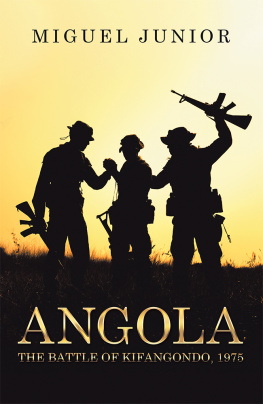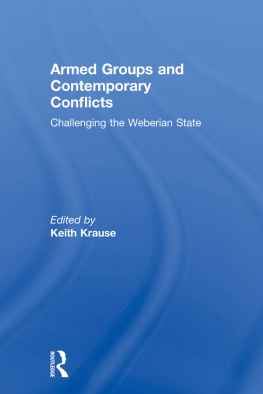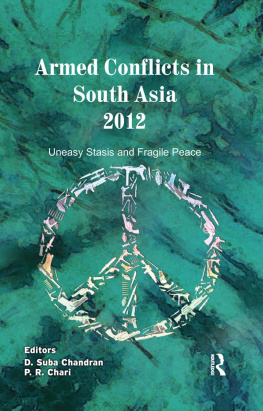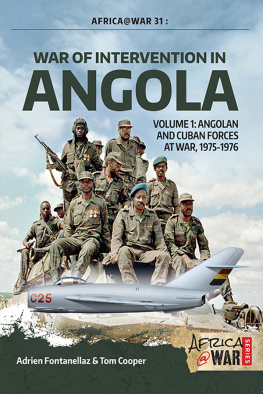ANGOLA
THE BATTLE OF KIFANGONDO, 1975
MIGUEL JUNIOR

AuthorHouse UK
1663 Liberty Drive
Bloomington, IN 47403 USA
www.authorhouse.co.uk
Phone: 0800 047 8203 (Domestic TFN)
+44 1908 723714 (International)
2020 Miguel Junior. All rights reserved.
No part of this book may be reproduced, stored in a retrieval system, or transmitted by any means without the written permission of the author.
Published by AuthorHouse 12/10/2019
ISBN: 978-1-7283-9679-8 (sc)
ISBN: 978-1-7283-9680-4 (e)
Any people depicted in stock imagery provided by Getty Images are models, and such images are being used for illustrative purposes only.
Certain stock imagery Getty Images.
Because of the dynamic nature of the Internet, any web addresses or links contained in this book may have changed since publication and may no longer be valid. The views expressed in this work are solely those of the author and do not necessarily reflect the views of the publisher, and the publisher hereby disclaims any responsibility for them.
CONTENTS
ACRONYMS AND ABBREVIATIONS
CE special commandos
ELNA National Liberation Army of Angola
ELP Portuguese Liberation Army
FAA Armed Forces of Angola
FNLA National Liberation Front of Angola
FAPLA Peoples Armed Forces for the Liberation of Angola
FAR Revolutionary Armed Forces of Cuba
ZAF Zairean Armed Forces
MPLA Peoples Movement for the Liberation of Angola
UNITA National Union for the Total Independence of Angola
On November 11 each year, the Angolan people celebrate national independence joyfully and with emotion. That date marks the birth of the Republic of Angola as a free, independent, and sovereign state. Upon proclamation of national independence, Angola entered the Concert of Nations. Hence, Angolans are proud of the conquest of independence and of the many victories that they have reached in several domains of national life throughout thirty-five years. In the field of national conquests, peace is the great conquest of Angolans because it represents the backbone for growth and national development. Peace is the inescapable base to materialise national aspirations and have a full and harmonious life. As such, Angolans are confident and will do everything to preserve peace.
When one reminisces about November 11, the first image that comes to mind is the moment of war that we were living in the remote year 1975. When we celebrate another anniversary of our independence, let us return to the words of Dr Antnio Agostinho Neto, expressed in the act of proclamation of national independence. Another aspect that one must not ignore or underestimate concerns the Battle of Kifangondo, which was decisive in the context of the 1975 war.
Due to its impact, one must remember it and simultaneously see it as a moment of reflexion. In this perspective, and within the scope of the commemorations of the thirty-fifth anniversary of independence, the Ministry of National Defence and the General Staff of the FAA held a conference the first amongst us about the battle of Kifangondo. We thus go into reviewing battles as a current practice of military and academic institutions, an input to inform thought about situations of war, and in this case the very history of Angola.
In this book, we gather the presentations uttered for the public so that readers can know some historic elements of the battle of Kifangondo.
Institute of Thought
1
ELNA AND THE BATTLE OF KIFANGONDO
General Tonta Afonso de Castro
I will frame the description of the battle in terms of politics, scope and aim, strategy, composition of forces, environment, and battle proper.
I. POLITICAL ASPECTS
The National Liberation Front of Angola (FNLA), which began as a national liberation movement, was one of the first political parties to arise in the context of the fight against Portuguese colonialism. It had regional implantation with greater incidence in the north and east of the country, where sociopolitical structures existed to support the struggle.
The Alvor Agreements, signed jointly by the three movements then existing and by the colonial power Portugal, created a new setting that allowed for pseudo-coexistence. Nevertheless, the three movements were uncontained because they occupied areas and took up positions throughout the country, mainly within the zone of influence of each movement and its political centre of power.
In 1974, members of FNLA began their plan of returning from what was then the Republic of Zaire, where they had installed their political-administrative and military office, to inner Angola. The delegation was led by Hendrick Vaal Neto, who was replaced after a time by Ngola Kabangu, the brother-in-law of Holden Roberto. The latter was joined by Johnny Pinock, Milton Lado, Paulo Tuba, Miranda, Dr Abrigada, and several militants who were in the inner country.
From that year, the presence of the National Liberation Army of Angola (ELNA) was felt through an estimated strength of four battalions, reinforced with commando units trained in the Zairean Base of Kotakoli, at a troop strength of about 1,500 men. The consolidation of these forces began in MBanza-Kongo with 150 men and some instructors to train recruits in Nkiende (near Santo Antnio do Zaire in present-day Soyo) as a reinforced company. Some 800 to 1,000 men carried on to Luanda, and 150 stayed in Carmona (Uge). The remaining cities received recruits and part of the troops who deserted the colonial army and helped FNLA occupy part of the north and east. Leading the military component was Commander Pedro Barreiro.
FNLA took part in every structure created to stabilise the situation transitional government, mixed forces, and district governors and moved most of their political apparatus to Luanda, opening offices in Avenida Brazil (the so-called Peoples House) and delegations in quarters of the capital and in a number of districts. Despite these efforts, the situation was generally speaking always unsustainable. Armed confrontation burst out in almost every part of the territory, brought on by political and ideological differences between movements and by lack of understanding between the respective political leaders.
After fighting in all positions held by FNLA in Luanda caused genuine carnage due to the superior troop organisation and supremacy of the Peoples Movement for the Liberation of Angola (MPLA), in 1975 the forces of FNLA were routed and expelled from Luanda, with FNLA having returned to their zones of influence. But the political leadership bodies remained in Kinshasa, where their president, Holden Roberto, was.
II. SCOPE AND AIM
The Battle of Kifangondo was fought as part of FNLAs efforts to organise forces and march back to the city after being expelled from the capital. They were expected to arrive before November 11, 1975, the day the MPLA planned to proclaim independence. The aim was to prevent the act from being carried out in isolation, to intimidate the population of Luanda, and to discourage it from taking part in the event. The MPLA bombarded the city with heavy artillery from Morro da Cal before attacking the capital with the support of mercenaries and Zairean troops.
III. STRATEGY
The defeat of ELNA and FNLA resulted from the lack of concrete strategy from the political leadership. There was no cohesion of ideas or actions. The armies (or rather, the various forces) ELNA, the Zaireans, mercenaries, and South Africans thought they should act their own way. These independent actions undermined the principle of a single command.
Having wasted their troops in Luanda, FNLA saw their army weakened in men and materials and were forced to resort to the help of other armies and support mercenaries. Among the armies worthy of note are the Zairean troops contributed by President Mobutu Sese Seko, which comprised three infantry battalions, one squad of 120 mm rockets, one squad of Panhard armoured vehicles, two D30 120 mm guns, and a company of commandos. As for mercenaries, Portuguese led by Colonel Santos e Castro also joined with the FLNA.
Next page









